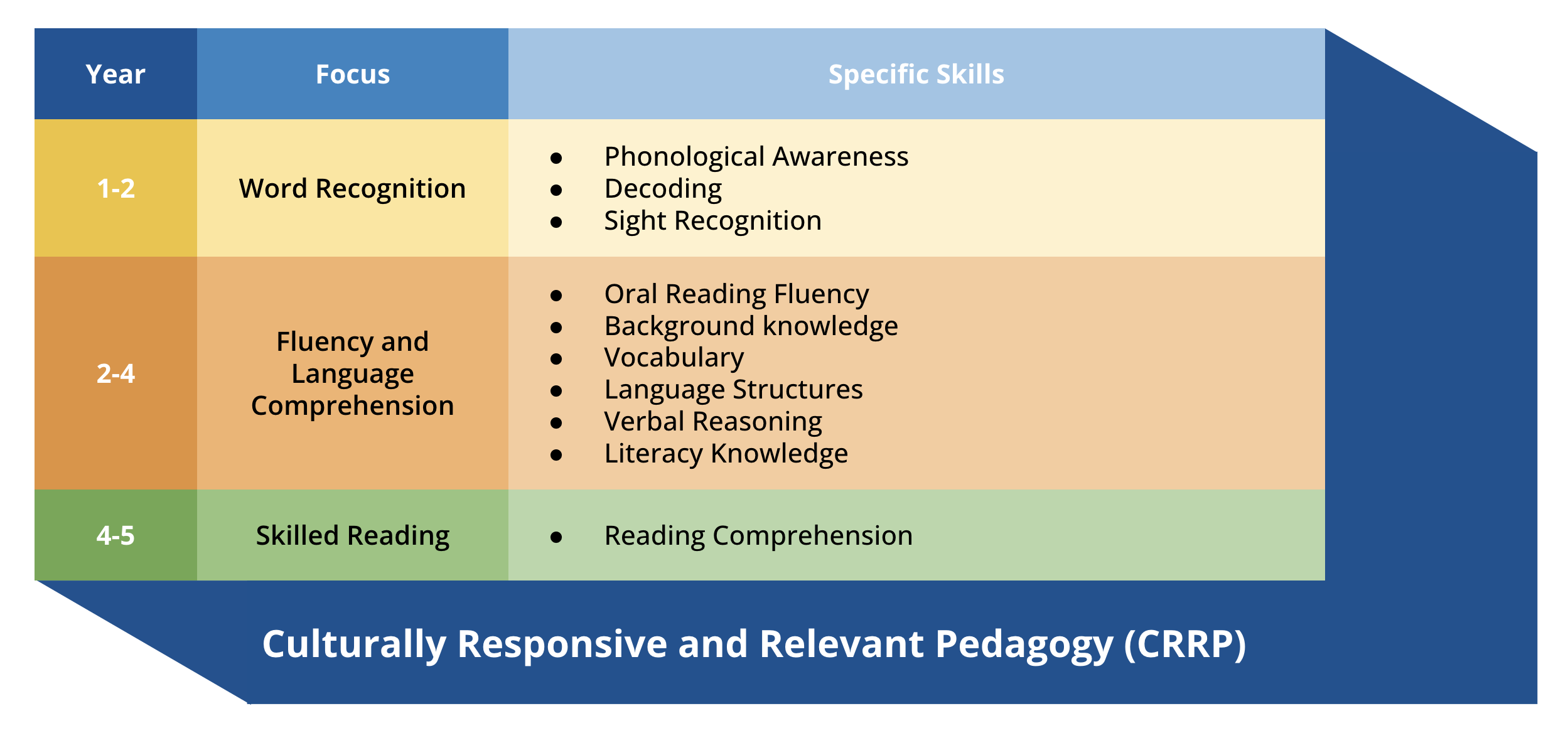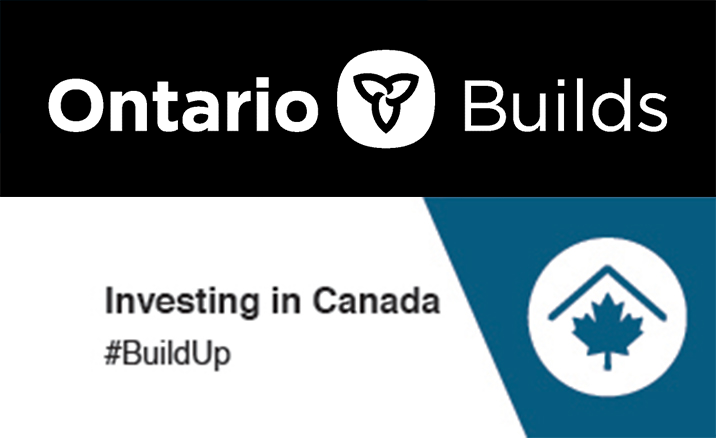
We’re focused on supporting all students to develop the literacy skills they need to succeed personally and academically. The Structured Literacy Multi-Year Plan (SLMYP) will help:
- To build capacity amongst educators and administrators across the WRDSB
- All students develop necessary language and literacy skills for academic success and well-being
About the WRDSB Structured Literacy Multi-Year Plan
The SLYMP builds on the Ontario Human Rights Commission’s Right to Read Report. The report marked a significant milestone in deeming literacy as a fundamental human right. However, the WRDSB’s work to provide the highest quality literacy education for students began before the release of this report and alongside:
- Educators
- Staff
- Families and caregivers
Our ambitious journey continues, guided by:
- Ontario Human Rights Commission’s Right to Read Report
- Ministry of Education directives and curriculum
As noted in the Right to Read Report, becoming fully literate is more than just the ability to read words. The ability to understand the words and sentences are important for strong reading comprehension. Teaching literacy also includes:
- Oral language development
- Vocabulary and knowledge development
- Writing
The WRDSB’s Structured Literacy Multi-Year Plan focuses on:
- Systematic, explicit, and evidence based instruction
- Prioritizes word recognition and language comprehension (aligned with Scarborough’s Reading Rope model)
Setting High Expectations for All Students
The implementation of the SLMYP spans across all grade levels. However, Grade 2 is a critical milestone. One of the key indicators for ensuring all students succeed academically is the number of students reading at grade level by the end of Grade 2.
Recognizing literacy as a fundamental human right will empower all students to:
- Achieve their full potential; and
- Provide pathways for students to meet their graduation goals.
The multi-year plan allows educators to build on students’ learning and experiences to:
- Develop foundational reading skills
- Progressively increase fluency
They support student learning by applying:
- Culturally Responsive and Relevant Pedagogy (CRRP)
- A tiered support model
CRRP emphasizes the importance of recognizing and valuing students’ diverse backgrounds, identities and lived experience while setting high expectations. Educators aim to create positive, inclusive and engaging learning experiences for all students. They do so in collaboration with:
- Students
- Families and caregivers
- Communities
It also requires educators and school leaders to engage in self-reflection regarding:
- Their biases
- The impact of their identities on student interactions
Equitable Access
The SLMYP implements a tiered approach to supporting students. This aims to provide high quality literacy instruction for all, while also catering to diverse learning needs. This includes a focus on meeting the specific needs of:
- Multilingual Language Learner (MLL) Students
- Students with special education needs.
Based on increased needs, students may receive more targeted support through:
- Assessment-driven, small group instruction
- Intensive support with specialized reading interventions
- This will help them develop essential reading skills
Measuring, Monitoring and Reporting Progress
The Board Improvement and Equity Plan (BIEP) provides opportunities for us to measure the impact and effectiveness of the SLYMP in a transparent and public manner. Three key indicators will help us assess our progress for both elementary and secondary students. We will focus on the percentage of:
- Students who are reading at grade level by the end of Grade 2
- Students who meet or exceed the provincial standard on Grade 3 and 6 EQAO assessments in reading and writing
- First time eligible, fully participating students who are successful on the Ontario Secondary School Literacy Test (OSSLT)
We will ensure that families and caregivers have an understanding of the difference this work is making for their children. We look forward to reporting back on the progress we have made at the conclusion of our current 2023-24 BIEP at the end of the calendar year.
Key Components of the WRDSB’s Structured Literacy Multi-Year Plan
The SLMYP is based on the Scarborough’s Reading Rope model. This is where different strands are woven together to build comprehensive literacy skills.
As language comprehension is strategically introduced and word recognition increasingly becomes automatic, students will develop into skilled readers.
Language Comprehension
- Background knowledge
- Vocabulary
- Language structures
- Verbal reasoning
- Literary knowledge
Word Recognition
- Phonological awareness
- Decoding
- Sight recognition
The SLMYP is based on Scarborough’s Rope model. It focuses on:
- Enhancing the skills of educators and administrators in teaching foundational reading skills
- Emphasizing a non-hierarchical integration of these skills
This means different skills may be introduced to students at different times, based on students’ learning needs.
The 2023-2024 school year marks the second year of the plan. Years 2-4 focuses on fluency. This includes recognizing its connection with word recognition and reading comprehension.

Supports for Educators
The implementation of the SLMYP is aligned with the WRDSB:
- Conditions for Learning
- Strategic Directions
The implementation of structured literacy is designed to provide all students with the necessary tools to excel academically. It takes a particular focus on reading proficiency by the end of Grade 2.
The approach involves building the capacity of administrators and educators in:
- Structured literacy
- Implementing evidence-based reading practices
- Providing targeted professional learning
Additionally, WRDSB is supporting the implementation of the Structured Literacy Multi-Year Plan through:
- Consultant supports
- Voluntary training on the use of a universal screening tool and diagnostic assessments
- Professional development and support to implement the revised:
- Language (Grades 1-8) Curriculum
- Grade 9 English Curriculum
- School-based supports to build capacity, including:
- Reading resource teachers (elementary)
- Literacy intervention specialists (Grades 7-8)
- Secondary itinerant literacy coaches
- Resource supports for additional self-directed educator learning
- Administrator learning series
Moving forward, WRDSB will continue to:
- Work with families and community partners to share information
- Provide learning opportunities
- Gather feedback to support the implementation of the SLMYP
As we move ahead with this plan, our focus remains steadfast on creating learning environments for every student that are:
- Inclusive
- Supportive
- Culturally responsive and relevant
By integrating research into practice, we are committed to teaching reading strategies that guarantee equity of outcomes for all learners at WRDSB.
Categories: Learning Tags: literacy · read · reading · Structured Literacy · write · Writing

